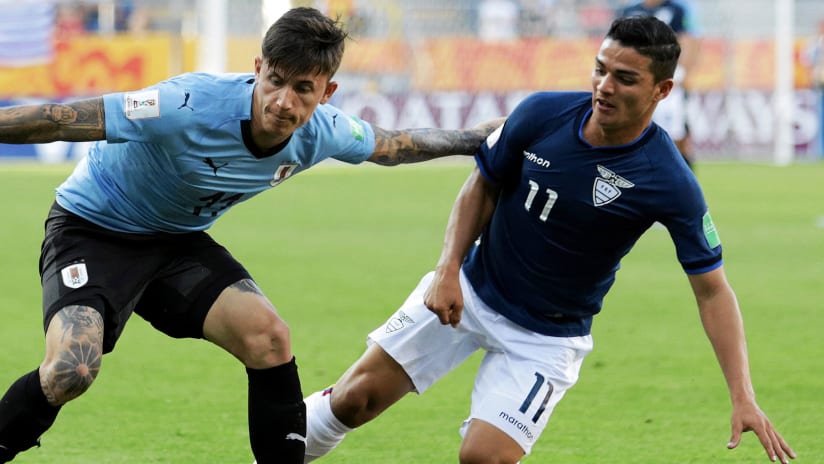After Miguel Almiron, Kaku, Ezequiel Barco, Jefferson Savarino and Diego Rossi, transfer signings of young, up-and-coming stars like Peñarol’s Brian Rodriguez (LAFC) and Boca Juniors’ Cristian Pavon (LA Galaxy), are now commonplace in MLS.
And I’d take it a step further: Save for the Brazilian market, where player fees are typically inflated, MLS clubs in the league’s 3.0 era have now jumped ahead of European sides to clinch the signatures of some of the top young talent in the rest of South America.
And it’s no surprise. MLS is not only making a significant investment in the players with the fees being paid out, but the league is also providing these players a world stage and an opportunity for development that their own South American domestic leagues are not. That’s how Almiron ultimately became a record transfer acquisition for Newcastle United and now the likes of Kaku, Savarino, Rossi are all rumored to have caught the eye of top clubs around the world.
And if players like LAFC’s Rossi and Rodriguez become MVP material or perhaps are eventually transferred – this week reports from Italy had Fiorentina interested in a big-money move – it will only validate the model of investing in young, talented players and raising their value through their on-field performance.
A transfer for a profit is also a clear indication to ownership that there is a concrete return to be had on these investments. It also gives the club the opportunity to reinvest that revenue. Atlanta proved this can be done with Almiron and I think we will see more clubs try to create their own version of this model.
Building South American roots
These moves are also helping MLS clubs continue to establish their presence as serious dealmakers in South America.
In the case of LAFC, they’ve now made two massive deals with Uruguay’s Peñarol. After acquiring Rossi at the age of 19, they made a move for another 19-year-old in Rodriguez for a reported $8 million. The relationship between the two clubs will only grow stronger after these transactions and now there’s even a friendly in the works. These players won’t be the last to make the jump.
And it’s no coincidence that LAFC have hit on most of their international signings – Andre Horta didn’t settle in, but Eduard Atuesta, Eddie Segura and Adama Diomande have been strong contributors. But the success stories don’t mean these moves come without risk.
A well-structured scouting department mitigates that risk. It’s important to have scouts monitoring players consistently over a period of time and that involves plenty of work: watching full match videos and live matches, using analytics to measure KPIs, reviewing a player’s injury history, collecting detailed background information on players, producing formal reports and then organizing all of this information into a club database.
Another reason that LAFC’s international investments have panned out: They are deliberate as to how they go about making their decisions. And the starting point is having clear player profiles based on the team’s playing style. Without a clear vision as to how you want your team to play and subsequently, what characteristics you are looking for in a player, it’s challenging to scout in a structured and organized manner.
And based on what I’ve heard from insiders, LAFC’s technical side is a well-oiled machine with every member of their structure working together in an inclusive process with a single goal: winning trophies.
It’s a model that’s catching on with other MLS clubs. Gone are the days when players were signed on a whim because they were referred by an agent who shared a few highlight videos. These are boon times on the international market and given the resources being made available, the long-term impact of this evolution on the league and its clubs will be felt for years to come.













